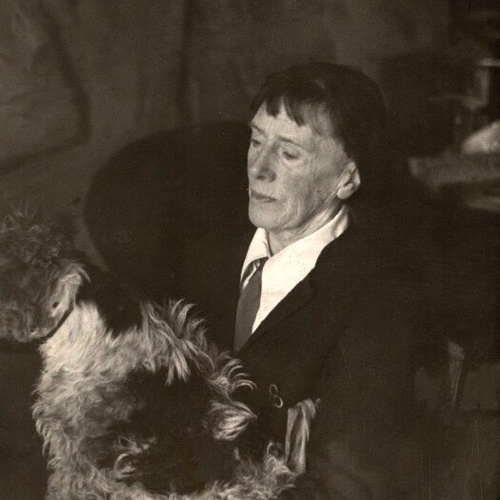Ethel Walker 1861-1951
Dame Ethel Walker ARA was an important female artist in early twentieth-century British painting.
Walker was born in Edinburgh, though her family made their name in Rotherham, where they built Clifton House, now a museum. She was educated in London, where her drawing master Hector Caffieri ignited an early interest art and lead Walker to choose to attend art school, first Ridley then Putney, in the 1880s. Walker followed this with a trip to paint with the Impressionists in France and some time in Spain in the early 1890s, where she was most taken by the work of Velazquez. Returning to London in 1892, she began to study at the Westminster School of Art, under Fred Brown, before transferring to the Slade the following year. It was here that she became a student of Walter Sickert, who can be said to have had the most profound effect on her early career.
She went on to build a reputation as one of the outstanding female British artists of her period, particularly known for her Impressionist techniques and portrayal of female figures. In 1900 Walker became the first female member of the New English Art Club, though she had also exhibited at the Royal Academy from 1898. Her first solo exhibition was at the Redfern Gallery in 1927. Walker represented Britain at the Venice Biennale in 1930 and 1932 and in 1939 she represented Britain at the World Trade Fair in Chicago with Nausicaa. Collected by Carel Weight and Robert Lillie and a friend of Lucien Pissarro. She spent her time between Cheyne Walk, Chelsea and her cottage and studio at Robin Hood's Bay, Yorkshire, whose school she is most associated with. Her work was shown at the Mayor, Redfern, Reid and Lefevre and Leicester Galleries. Walker was made a Dame of the British Empire in 1943 and the Tate held a memorial exhibition of her works in 1952.
Walker's work is part of a large number of museums and public collections including the Tate; Royal Academy, London; Arts Council; Government Art Collection; National Portrait Gallery; National Museums of Scotland, Wales and Northern Ireland; Courtauld Gallery; Fitzwilliam Museum; Ashmolean Museum; Hepworth Wakefield; and regional museums and galleries including Brighton; Reading; Manchester; Glasgow; Leicester; Leeds; Sheffield; York; Hull; Worthing; Blackburn; Bradford; Doncaster; Oldham; Rotherham; Stoke-on-Trent; Salford; Whitworth, Manchester; Walker, Liverpool; Williamson, Wirral; Laing, Newcastle; Harris, Preston; Pannett, Whitby; Wilson, Cheltenham; Tullie House, Carlisle; and Lakeland Arts, Cumbria. National Trust properties including Standen House and Fenton House.
